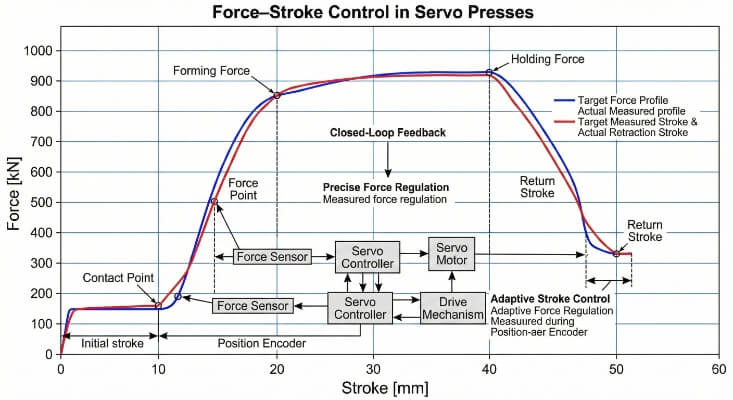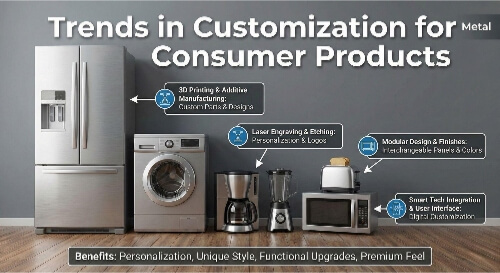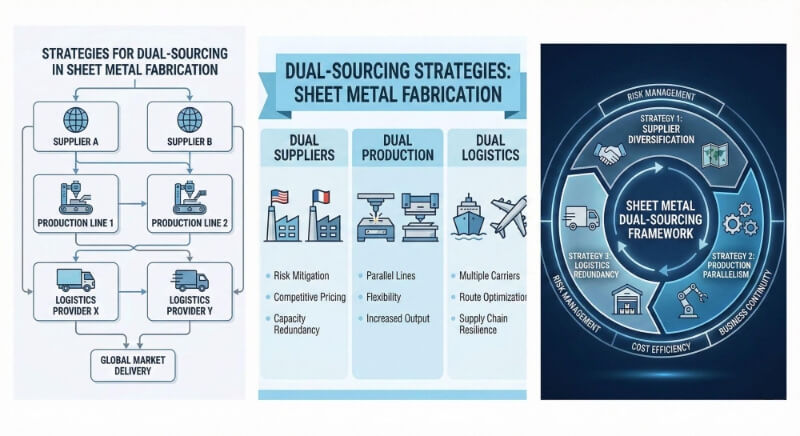Manufacturing complex parts quickly and accurately can be a daunting challenge. Many manufacturers struggle with slow production rates, inconsistent quality, and high costs when creating intricate metal components. Transfer press stamping solves these common pain points, enabling rapid, precise fabrication of sophisticated parts.
Transfer press stamping is a highly efficient metalworking process using automated die stations to form complex parts. It combines the speed of traditional stamping with the versatility of progressive dies, allowing for the production of intricate components in a single-machine cycle.
This advanced stamping technique has revolutionized metal fabrication across industries. Let’s explore how transfer press stamping works and why it’s become indispensable for modern manufacturing.
Understanding the Transfer Press Process
What is Transfer Press Stamping?
Transfer press stamping is a high-speed, multi-stage metal forming process. It combines the efficiency of progressive stamping with the flexibility of individual die stations. This method allows for producing complex parts that would be difficult or impossible to create using traditional stamping techniques.
In transfer press stamping, a series of tools perform different operations on a single workpiece. The workpiece moves through multiple stations within the press, with each station adding features or refining the part. This process enables manufacturers to produce intricate components rapidly and with high precision.
Critical Components of a Transfer Press
A transfer press system consists of several crucial elements:
- Press bed: The foundation that supports the entire system
- Ram: The moving part that applies force to the workpiece
- Die stations: Individual tools that perform specific operations
- Transfer system: Automated mechanism that moves parts between stations
- Feeding system: Supplies raw material to the first station
- Control system: Coordinates the movements of all components
How Transfer Press Stamping Works: Step-by-Step Process
- Material feeding: The process begins with a coil or sheet of metal fed into the press.
- Blanking: The first station cuts out the basic shape of the part from the raw material.
- Transfer: The transfer system picks up the blank and moves it to the next station.
- Forming operations: Subsequent stations perform various operations such as bending, drawing, or piercing.
- Final shaping: The last few stations refine the part’s shape and add any necessary details.
- Ejection: The finished part is ejected from the press and collected for further processing or packaging.
- Repeat: The process continues with the next part, maintaining a high production rate.
This streamlined process allows for efficient production of complex parts, making transfer press stamping a valuable technique in modern manufacturing.
Types of Transfer Press Stamping
Progressive Die Stamping vs. Transfer Press Stamping
While both methods are efficient, they serve different purposes:
Progressive Die Stamping:
- Uses a single press with a series of stations in one die-set
- Best for smaller parts with simpler geometries
- Material remains connected as a strip until the final cut
Transfer Press Stamping:
- Employs multiple, separate die stations
- Ideal for larger, more complex parts
- Parts are entirely separated and moved between stations
Transfer press stamping offers greater flexibility and can handle more intricate designs than progressive die stamping.
Single-Stage Transfer Press Stamping
This type of transfer press uses a single press to perform all operations:
- One large press houses multiple die stations
- Parts move horizontally between stations
- Suitable for medium-sized parts and moderate production volumes
- Offers a good balance of versatility and efficiency
Multi-Stage Transfer Press Stamping
Multi-stage systems use separate presses for different forming stages:
- Multiple presses are arranged in a line or L-shape
- Each press can be optimized for specific operations (e.g., drawing, piercing)
- Ideal for extensive parts or high-volume production
- Allows for more complex forming operations and better process control
Each type of transfer press stamping has its strengths, and manufacturers choose based on their specific part requirements, production volumes, and available floor space.
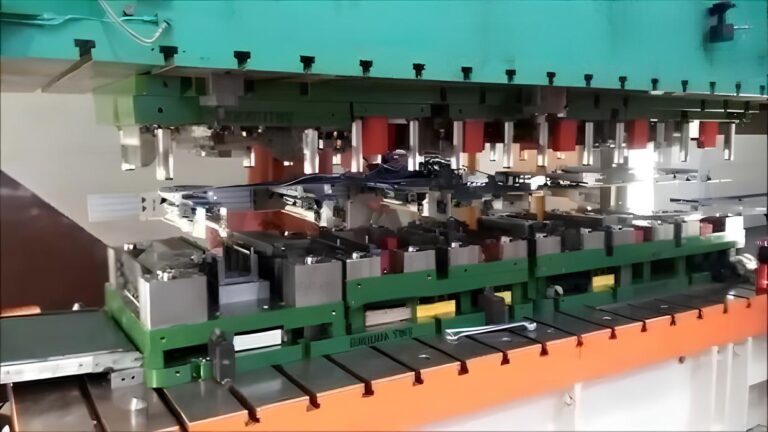
Benefits of Transfer Press Stamping
Precision and Accuracy in Complex Parts
Transfer press stamping excels at producing intricate components with tight tolerances:
- Multiple forming operations allow for complex geometries
- Controlled part movement between stations ensures consistent positioning
- Advanced die designs and precision controls maintain accuracy across high volumes
- Capable of achieving tolerances as tight as ±0.1mm on complex parts
This level of precision is crucial for industries like automotive and aerospace, where component fit and function are critical.
High Production Speed and Efficiency
Transfer press stamping significantly boosts production rates:
- Automated part transfer eliminates manual handling between operations
- Multiple parts can be in production simultaneously at different stations
- Cycle times are often measured in seconds, enabling high-volume output
- Reduced setup times compared to using multiple standalone presses
These factors combine to make transfer press stamping one of the most efficient metal-forming processes.
Reduced Material Waste and Costs
The process offers several ways to minimize waste and cut costs:
- Optimized nesting of parts on raw material sheets reduces scrap
- The ability to use near-net-shape blanks minimizes excess material
- Fewer secondary operations are needed, reducing labor and handling costs
- High production speeds lower per-part manufacturing costs
By maximizing material utilization and streamlining production, transfer press stamping helps manufacturers control expenses.
Flexibility in Materials and Applications
Transfer press stamping can handle a wide range of materials and part types:
- Compatible with various metals, including steel, aluminum, and copper alloys
- Can produce parts ranging from small electronics components to sizeable automotive body panels
- Adaptable to different production volumes, from prototypes to mass production
- Able to incorporate in-line secondary operations like tapping or welding
This versatility makes transfer press stamping valuable across numerous industries and applications.
Tooling in Transfer Press Stamping
The Importance of Precision Tooling
Precision tooling is the cornerstone of successful transfer press stamping:
- High-quality dies ensure consistent part geometry and surface finish
- Precise tooling alignment maintains tight tolerances across production runs
- Well-designed tools minimize wear and extend production life
- Accurate tooling reduces scrap rates and improves overall efficiency
Investing in top-notch tooling pays dividends in product quality and long-term cost savings.
Custom Tooling Options for Complex Parts
Transfer press stamping allows for highly specialized tooling solutions:
- Multi-action dies to enable complex forming operations in a single-station
- Cam units and hydraulic cylinders create undercuts and other challenging features
- Modular die designs allow for quick changeovers and product variations
- Simulation software aids in optimizing tool design before fabrication
These custom tooling options enable manufacturers to produce parts that would be difficult or impossible with conventional stamping methods.
Tooling Maintenance and Longevity
Proper care of transfer press tooling is crucial for maintaining productivity:
- Regular inspection and maintenance prevent unexpected downtime
- Timely sharpening and repair of worn surfaces extend tool life
- Proper lubrication and cooling systems protect tools during operation
- Careful handling and storage prevent damage between production runs
A well-maintained tooling set can produce millions of parts before requiring replacement, making it a valuable asset in manufacturing.
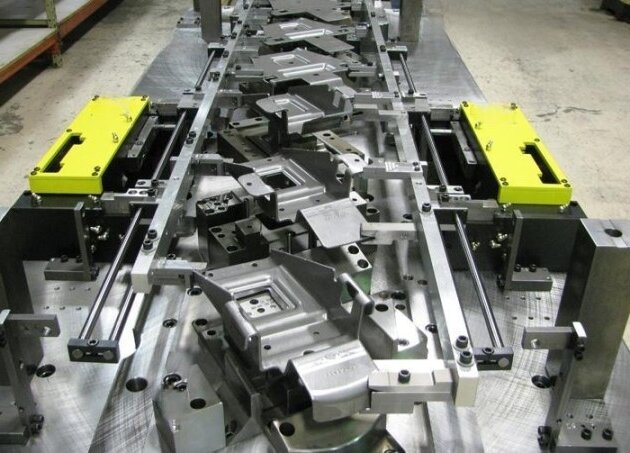
Common Applications of Transfer Press Stamping
Automotive Industry
Transfer press stamping plays a crucial role in automotive manufacturing:
- Body panels: Doors, hoods, and fenders
- Structural components: Frame parts and reinforcements
- Powertrain parts: Transmission cases and engine brackets
- Interior components: Seat frames and dashboard structures
Automakers rely on this technology to produce complex, high-strength parts at high volumes while maintaining tight tolerances.
Aerospace and Defense
The aerospace sector benefits from transfer press stamping in several ways:
- Aircraft skin panels: Large, contoured sheets for fuselage and wings
- Structural components: Ribs, spars, and bulkheads
- Engine parts: Turbine blades and combustion chamber components
- Satellite and spacecraft components: Lightweight, precision parts
Transfer press stamping allows for producing lightweight yet strong parts crucial for aerospace applications.
Household Appliances
Many household items rely on parts made through transfer press stamping:
- Washing machine drums: Large, perforated cylinders
- Refrigerator panels: Formed sheets for interior and exterior surfaces
- Oven components: Cooking chamber parts and supports
- Miniature appliance housings: Durable casings for blenders, mixers, etc.
Transfer press stamping enables manufacturers to produce these parts efficiently and cost-effectively, contributing to the affordability of many household appliances.
Factors Influencing Transfer Press Stamping Quality
Material Selection and Thickness
The choice of material significantly impacts the final product quality:
- Material properties affect formability and spring-back
- Thickness variations can lead to inconsistent part dimensions
- Proper material selection ensures optimal strength and durability
- Some materials require specific press settings or lubricants
Manufacturers must carefully consider material characteristics to achieve desired part qualities and maintain consistent production.
Tooling Design and Accuracy
Well-designed and precisely manufactured tooling is crucial:
- Accurate die geometry ensures part consistency
- Proper clearances prevent burrs and excessive tool wear
- Optimized die sequences minimize material stress and defects
- Regular tool maintenance preserves dimensional accuracy
Investing in high-quality tooling pays off in reduced scrap rates and improved part quality.
Machine Settings and Calibration
Precise control of the press and transfer system is essential:
- Proper press force prevents under-forming or over-stressing parts
- Accurate stroke length ensures complete forming at each station
- Correct transfer timing prevents misalignment or part damage
- Regular calibration maintains consistent performance over time
Skilled technicians must fine-tune these settings to achieve optimal results.
Operator Skill and Experience
Despite automation, human expertise remains valuable:
- Experienced operators can spot potential issues before they affect production
- Skilled set up technicians ensure proper tool installation and alignment
- Knowledgeable personnel can quickly troubleshoot and resolve problems
Investing in operator training and retention is critical to maintaining high-quality output in transfer press stamping operations.
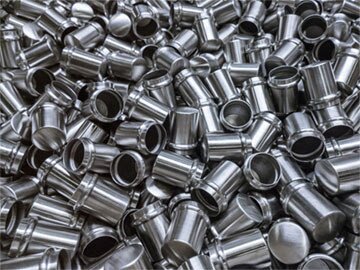
Challenges in Transfer Press Stamping
Common Defects and How to Prevent Them
Transfer press stamping, while efficient, can produce various defects if not adequately controlled:
Wrinkles:
- Cause: Insufficient blank holding force or improper material flow
- Prevention: Optimize blank holder pressure and lubrication
Tearing:
- Cause: Excessive stretching or sharp die radii
- Prevention: Adjust material flow, increase die radii, or use more robust materials
Surface scratches:
- Cause: Rough die surfaces or improper part handling
- Prevention: Polish die surfaces regularly and ensure smooth transfer operations
Dimensional inaccuracies:
- Cause: Tool wear, improper setup, or material variations
- Prevention: Regular tool maintenance, precise setup procedures, and consistent material quality
Dealing with Springback and Warping
Springback and warping are common issues in sheet metal forming:
- Understand material properties: Different materials exhibit varying degrees of springback
- Use simulation software: Predict and compensate for spring back during die design
- Employ overbending: Design dies to slightly overform parts, accounting for spring-back
- Implement in-die techniques: Use additional forming steps or restrike operations to control the final part shape
- Consider heat treatment: For certain materials, post-forming heat treatment can reduce residual stresses
Machine Downtime and Maintenance
Minimizing downtime is crucial for maintaining productivity:
- Implement preventive maintenance: Regular inspections and part replacements prevent unexpected failures
- Use condition monitoring: Sensors and data analysis help predict maintenance needs
- Stock critical spare parts: Keep commonly needed replacement parts on hand to reduce repair times
- Train maintenance staff: Ensure technicians are skilled in quickly diagnosing and resolving issues
- Plan for scheduled maintenance: Coordinate downtime with production schedules to minimize impact
By addressing these challenges proactively, manufacturers can maintain high efficiency and quality in their transfer press stamping operations.
Conclusion
Transfer press stamping has transformed the production landscape, enabling the creation of complex parts with unprecedented efficiency. From automotive components to aerospace structures, transfer press stamping continues to push the boundaries of what’s possible in metal forming.
Success in transfer press stamping demands a deep understanding of materials, tooling, and process control. It requires ongoing investment in technology and expertise to stay competitive in an ever-evolving industry.
Do you need a reliable sheet metal parts manufacturer? Shengen is the place to go. We specialize in sheet metal laser cutting, stamping, surface finish, and CNC Machining. Reach out to Shengen Today and seek help from professionals!
FAQs
What is the difference between press and stamping?
Pressing generally refers to the broader action of applying force to a material, while stamping is a specific type of pressing operation. Stamping typically involves using dies to cut, form, or shape sheet metal into specific parts.
Can Transfer Press Stamping Handle Complex Geometries?
Yes, transfer press stamping excels at producing parts with complex geometries. The multi-stage process allows for intricate forming operations that would be difficult or impossible with more straightforward stamping methods.
How Does Transfer Press Stamping Impact Production Costs?
Transfer press stamping can significantly reduce production costs, especially for medium to high-volume runs of complex parts. While initial tooling costs may be higher, the process offers faster production speeds, reduced material waste, and fewer secondary operations. This results in lower per-part costs over time.
Hey, I'm Kevin Lee

For the past 10 years, I’ve been immersed in various forms of sheet metal fabrication, sharing cool insights here from my experiences across diverse workshops.
Get in touch

Kevin Lee
I have over ten years of professional experience in sheet metal fabrication, specializing in laser cutting, bending, welding, and surface treatment techniques. As the Technical Director at Shengen, I am committed to solving complex manufacturing challenges and driving innovation and quality in each project.

